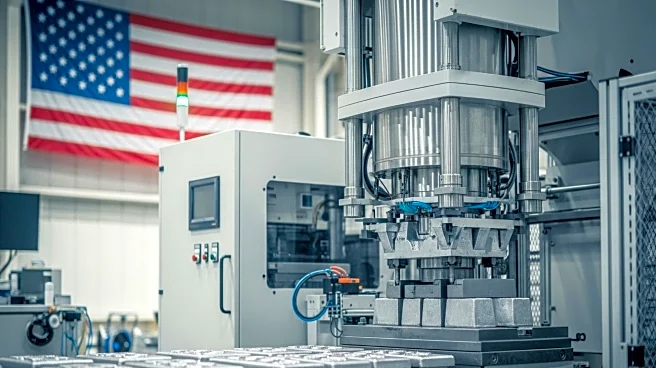What's Happening?
American Power Company (APC) has been awarded a $100,000 SuperBoost PLUS grant from The Energy Storage Engine in Upstate New York, funded by the National Science Foundation. This grant supports APC's initiative to demonstrate a lithium-ion battery with fully domestic content. The project involves collaboration with various U.S. innovators, including Bridge Green Recycling, Arcam Technologies, Ateios Systems, and Anovion Technologies, to create advanced battery components. These components will be assembled into 18650-format cylindrical battery cells for a real-world drone demonstration, aiming to enhance military, medical, and homeland security applications. Lincoln Miara, Ph.D., CTO of APC, emphasized the project's significance in strengthening U.S. security, economy, and supply chains.
Why It's Important?
The initiative is crucial for advancing U.S. battery independence and reinforcing national security. By developing a 100% domestic battery supply chain, the project aims to reduce reliance on foreign battery technologies and enhance the country's energy security. The collaboration between various domestic pioneers highlights the potential for innovation and economic growth within the U.S. battery manufacturing sector. The successful demonstration of these batteries could lead to broader applications in critical infrastructure, supporting the U.S. economy and national security.
What's Next?
The drone demonstration, expected by the end of 2025, will validate the technical performance and viability of the domestic battery supply chain. This project also includes a retrospective report to outline lessons learned and challenges overcome, providing a blueprint for future public-private collaboration in energy manufacturing. The Energy Storage Engine in Upstate New York aims to transform the region into America's Battery Capital, driving economic growth and bolstering national security.
Beyond the Headlines
The project represents a significant step towards restoring U.S. leadership in battery manufacturing. It underscores the importance of collaborative investments in developing resilient, homegrown energy solutions. The initiative could lead to long-term shifts in the U.S. energy landscape, promoting sustainable practices and enhancing the country's technological capabilities.











